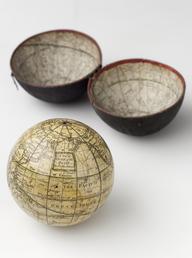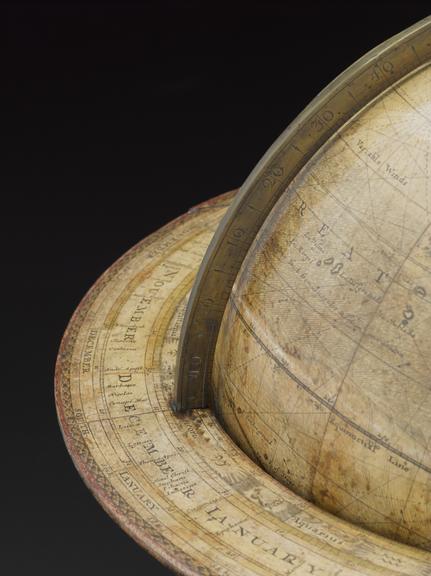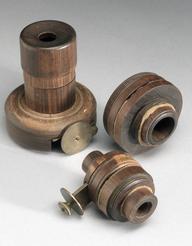







Twelve-inch terrestrial globe made by John Senex, Fleet Street, London, 1738. Inscribed: ‘A new and correct Globe of the Earth together with a view of the general and coasting trade winds, monsoons etc. Laid down according to the newest discoveries and from the most exact observations by John Senex, F.R.S. Sold by him at the Globe against St. Dunstans Church in Fleet Street, 1738.’
This terrestrial globe formed a pair with a celestial globe. Globes were increasing in popularity during the 18th century, often used in domestic settings for making geographical and astronomical calculations, and for teaching the principles of those subjects.
The trade winds have been carefully marked on this globe, showing their direction and when they occur.
John Senex was a publisher, mapmaker and globe-maker at work in London in the first half of the 18th century. He was well-regarded for the quality of his work, and had connections with some of the pre-eminent natural philosophers in the country, being elected a Fellow of the Royal Society in 1728. Upon his death in 1740, his wife Mary took over the running of the business.
Look closer
Senex terrestial globeDetails
- Category:
- Astronomy
- Object Number:
- 1915-395
- Materials:
- complete, wood, plaster, paper and brass (copper, zinc alloy)
- Measurements:
-
overall: 475 mm 425 mm, 4.4 kg
- type:
- terrestrial globe
- credit:
- Mr Thomas H. Court




